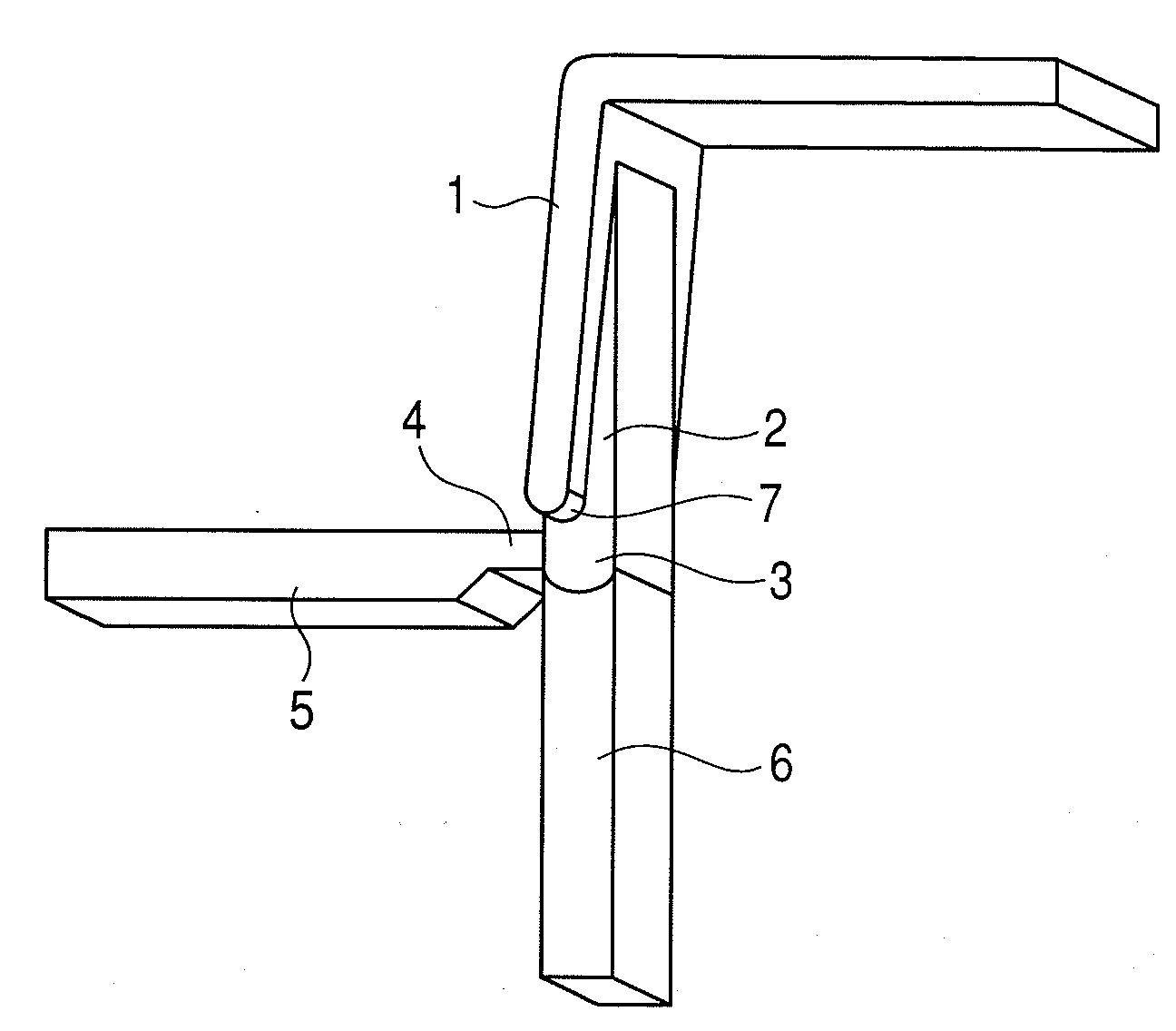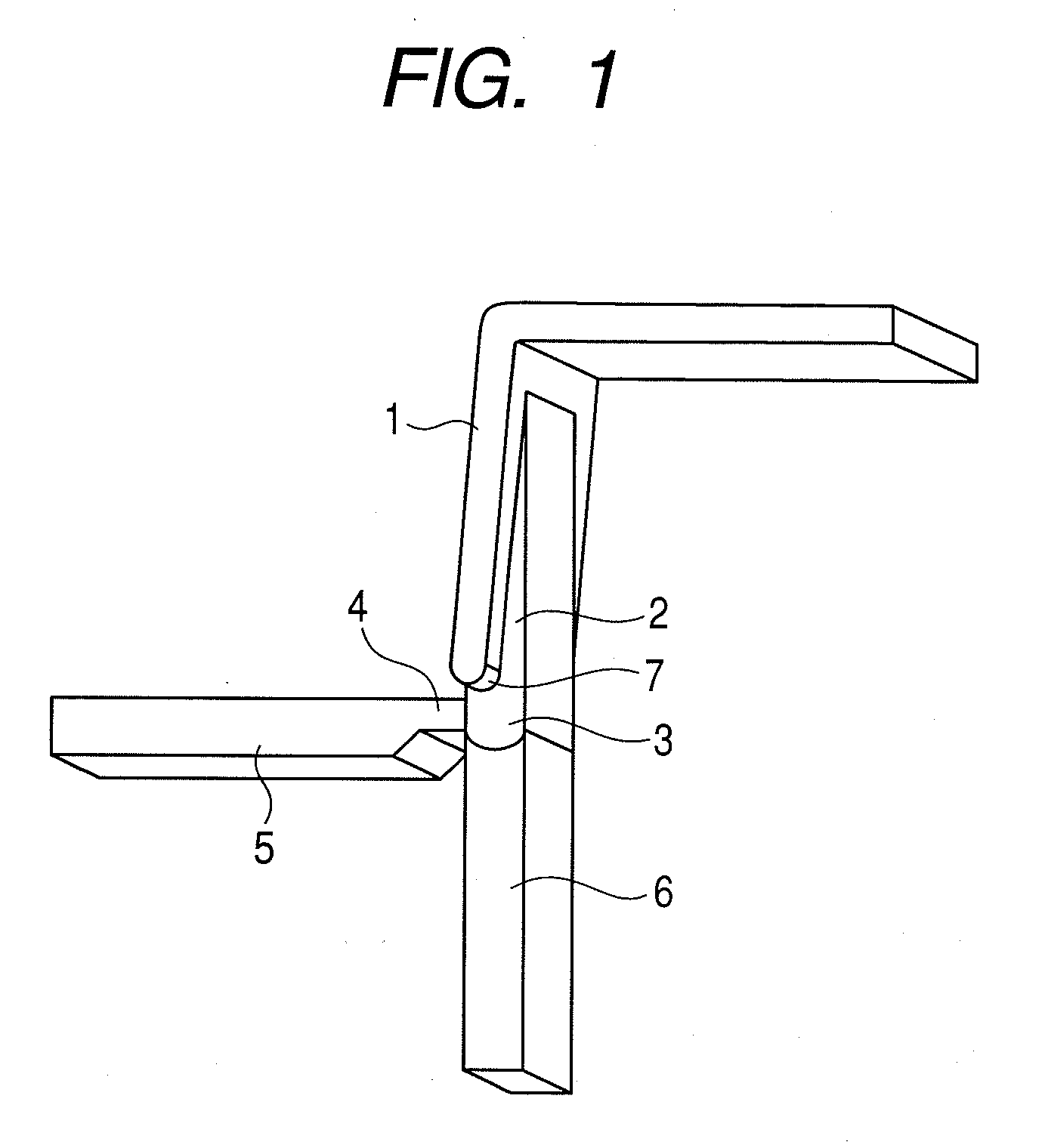Injection molding process, resin molded product and mold
a technology of injection molding and resin molded products, which is applied in the direction of identification means, instruments, applications, etc., can solve the problems of increasing the cost of parts, taking labor costs, and affecting the appearance quality of the product, and achieves high production efficiency and high appearance quality
- Summary
- Abstract
- Description
- Claims
- Application Information
AI Technical Summary
Benefits of technology
Problems solved by technology
Method used
Image
Examples
Embodiment Construction
[0033]The construction and operation of a resin molding mold according to the present invention will be described with reference to the drawings.
[0034]FIG. 1 illustrates an exemplary embodiment showing the fundamental constitution of the present invention and is a schematic view in the vicinity of a gate just after a resin is filled into a mold. In FIG. 1, are illustrated a part shape portion 1, a compression-purpose thick portion 2 which is opposed to a cutting pin 6 and has a large wall thickness than the surrounding part shape portion 1, a compression shape portion 3, a gate portion 4 having a gate at the end thereof, a runner portion 5, a pin- or block-shaped cutting pin 6, and a product end surface 7. The parts shape portion 1 and the compression-purpose thick portion 2 constructs a product shape portion, which has a shape to become a product. FIG. 2 illustrates a state just after the gate has been cut off in the present invention.
[0035]Operation will now be described with refe...
PUM
| Property | Measurement | Unit |
|---|---|---|
| thickness | aaaaa | aaaaa |
| thickness | aaaaa | aaaaa |
| thickness | aaaaa | aaaaa |
Abstract
Description
Claims
Application Information
 Login to View More
Login to View More - R&D
- Intellectual Property
- Life Sciences
- Materials
- Tech Scout
- Unparalleled Data Quality
- Higher Quality Content
- 60% Fewer Hallucinations
Browse by: Latest US Patents, China's latest patents, Technical Efficacy Thesaurus, Application Domain, Technology Topic, Popular Technical Reports.
© 2025 PatSnap. All rights reserved.Legal|Privacy policy|Modern Slavery Act Transparency Statement|Sitemap|About US| Contact US: help@patsnap.com



